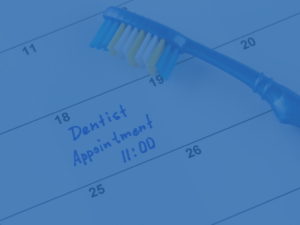The lip frenulum is a small fold of elastic tissue that connects the lip to the gums. It is part of the oral mucosa, (also called the mucous membrane), which lubricates and protects the mouth from pathogens and invasive particles.
The lip frenulum is composed of the Lingual Frenulum, which anchors the tongue to the floor of the mouth, the Maxillary Labial Frenulum, which connects the inner surface of the upper lip to the midline of the upper gums, typically between the central incisors, and the Mandibular Labial Frenulum which attaches to the midline of the lower gums.
Functions of the Lip Frenulum
The primary functions of the lip frenulum include a developmental role; during early development, the frenulum guides the growth and alignment of the teeth and oral structures; stabilization, which helps stabilize the position of the lips relative to the teeth and gums, contributing to oral structural integrity, and mobility control, wherein the frenulum limits excessive movement of the lips, preventing strain.
While these functions are essential for normal oral mechanics, the frenulum’s restrictive properties can sometimes lead to problems, particularly if it is abnormally short or thick.
Variations and Abnormalities of the Lip Frenulum
The lip frenulum can exhibit variations that may affect oral health and function. Common abnormalities include Ankyloglossia (Tongue-Tie) which involves an unusually short or tight frenulum that restricts tongue movement, potentially leading to speech and feeding difficulties; and Labial Frenulum Hypertrophy, which can interfere with oral functions and cause diastema (a gap between the front teeth).
Cultural Overview of the Lip Frenulum
In some cultures, frenulum modifications are performed for aesthetic or traditional reasons. The lip frenulum has also been a subject of interest in anthropology and evolutionary biology. Its variations among populations may reflect adaptations to different dietary habits or speech patterns.
Lip Tie Aesthetic Practices, Ritual Practices, and Oral Traditions
In some cultures, modifications of the lip frenulum are part of traditional practices. For instance, certain African tribes elongate the lower lip and may alter the frenulum to accommodate lip plates. Frenulum piercing is a modern cultural phenomenon in body modification communities, reflecting personal expression or adherence to sub-cultural aesthetics.
Rituals surrounding oral health and development, including frenulum inspection or alteration, are part of rites of passage or spiritual beliefs in some cultures. The frenulum’s role in speech also has cultural implications. A restrictive frenulum (“tongue-tie”) can affect articulation and pronunciation, which may influence participation in oral traditions or linguistic practices.
Clinical Implications of Lip Tie
The lip frenulum can have significant implications in speech therapy, dentistry, and orthodontics. Considerations include speech impediments—a restrictive frenulum may affect lip mobility, leading to articulation difficulties—breastfeeding difficulties; in infants, a tight frenulum can interfere with proper latching during breastfeeding, causing pain for the mother and inadequate feeding for the baby, and oral hygiene—an abnormal frenulum can create pockets that trap food debris, increasing the risk of gum disease and cavities.
Dental Practices
Different societies prioritize oral health differently. In modern dentistry, frenulum assessments are common for addressing issues like speech impediments or breastfeeding challenges in infants.
The lip frenulum is part of the broader evolutionary adaptations of the human oral cavity, enabling complex speech and fine motor control for food manipulation. Its presence reflects the transition from simpler oral structures in early primates to more specialized forms in humans, aiding in advanced communication and dietary versatility.
The frenulum may have co-evolved with the tongue and other oral structures to support the development of articulate speech, a hallmark of human evolution. Variations in frenulum anatomy may have influenced early human communication abilities, contributing to group cohesion and survival.
The frenulum’s role in breastfeeding (aiding in proper latch) is highlighted by its importance in neonatal survival. Natural selection likely favored newborns with optimal frenulum anatomy for effective feeding.
Lip Tie Dental Procedures— Diagnosis, Treatment, and Care
Proper oral hygiene and regular dental check-ups are essential for maintaining the health of the lip frenulum. After surgical procedures like frenectomy, patients should follow specific post-operative instructions, such as attending follow-up appointments to monitor recovery, maintaining oral cleanliness to prevent infection, and performing prescribed exercises to promote healing and prevent scar tissue formation.
A dentist plays a crucial role in diagnosing and correcting a lip tie because of their expertise in oral anatomy and its impact on overall oral health and function. Here’s why their involvement is important:
- Diagnosis and Assessment
Dentists are trained to identify lip ties, which occur when the frenulum (the tissue connecting the upper lip to the gums) is abnormally tight or restrictive. They assess the severity of the lip tie and its potential impact on oral functions, such as breastfeeding, speech, dental alignment, and oral hygiene. - Specialized Knowledge
Lip ties can affect the development of teeth and gums, leading to issues like gaps between teeth (diastema) or increased risk of tooth decay due to difficulty in cleaning. Dentists understand how a lip tie might contribute to long-term dental problems and can recommend the most appropriate treatment. - Treatment Options
Frenectomy or Frenuloplasty: Dentists often perform these procedures to correct a lip tie. A frenectomy involves removing the restrictive tissue, while a frenuloplasty reshapes it. Modern techniques, such as laser frenectomy, are minimally invasive, reduce discomfort, and promote faster healing. Dentists are skilled in these advanced procedures. - Collaboration with Other Professionals
Dentists often work alongside lactation consultants, speech therapists, and pediatricians to address the broader effects of a lip tie, especially in infants and children. This collaborative approach ensures comprehensive care and addresses any associated feeding, speech, or developmental challenges. - Post-Treatment Care
Dentists provide guidance on post-treatment exercises to prevent reattachment of the frenulum and ensure proper healing. They monitor oral health to prevent complications and ensure the correction supports normal development. - Impact on Overall Health
Untreated lip ties can lead to difficulties in breastfeeding, speech development, and oral hygiene, which can have a ripple effect on overall health. Early correction by a dentist helps mitigate these risks and supports optimal oral and systemic health.
Schedule a Consultation with Orem Pediatric Dentistry
If you suspect a lip tie in your child, we encourage you to schedule a consultation with us at Orem Pediatric Dentistry. Consulting a dentist experienced in oral ties is a vital step toward effective diagnosis and treatment.






